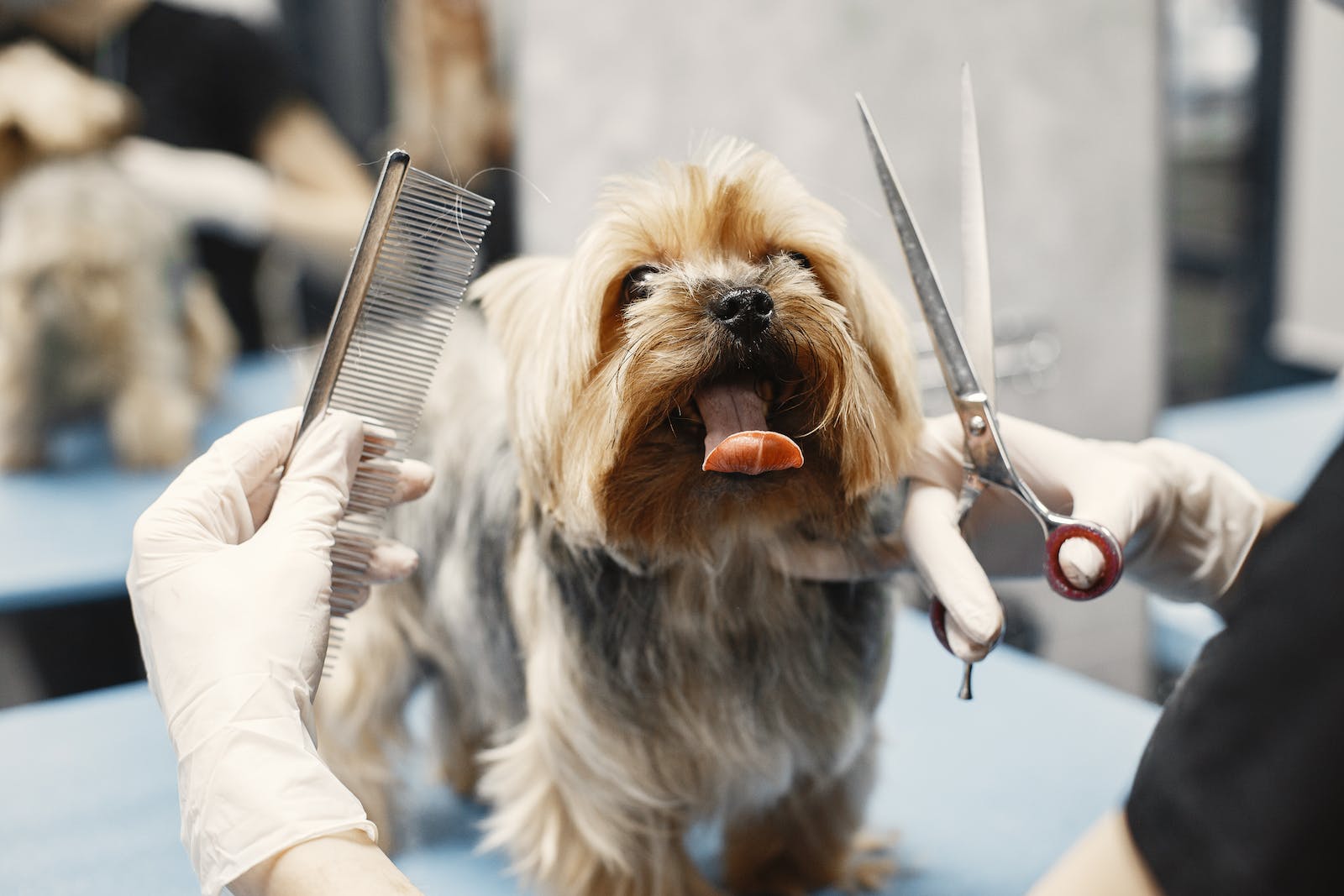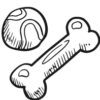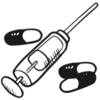
If you’re a dog owner, you know that keeping your furry friend looking and feeling their best is no small feat. From keeping their coat shiny and healthy to ensuring their nails stay trimmed, dog grooming can be a time-consuming and often overwhelming task. But fear not! With the help of this ultimate guide to dog grooming, you’ll have all the tips and tricks you need to achieve a flawless coat and keep your pup feeling pampered. From choosing the right grooming tools and products to mastering the art of brushing and bathing, we’ll cover it all. Whether you have a long-haired breed like a Shih Tzu or a short-haired breed like a Boxer, this guide will provide you with the knowledge and skills you need to give your furry friend the best grooming experience possible. So grab your comb and let’s get started!
Benefits of Regular Grooming
Grooming is an essential part of your dog’s overall health and well-being. Regular grooming not only helps to keep your dog clean and smelling fresh, but it can also prevent health problems such as skin infections and matted fur. Grooming also provides an opportunity for you to bond with your dog and show them how much you care.
One of the primary benefits of grooming your dog is that it helps to distribute their natural oils throughout their coat. These oils help to keep their skin moisturized and their coat shiny and healthy. Regular grooming can also help to remove dirt, debris, and dead hair from your dog’s coat, which can reduce the risk of skin infections and hot spots.
Another benefit of grooming your dog is that it allows you to check for any lumps, bumps, or other abnormalities on their skin. Catching these issues early can help to prevent more serious health problems down the road. Additionally, grooming can help to reduce shedding, which is a common problem for many dog owners. By removing loose hair from your dog’s coat, you can reduce the amount of hair that ends up on your furniture and clothing.
Understanding Your Dog’s Coat
Before you begin grooming your dog, it’s important to understand their coat type. Different breeds have different coat types, which can require different grooming techniques and tools. Some dogs have thick, double coats that require a lot of brushing, while others have short, single coats that require less maintenance.
Long-haired breeds, such as Shih Tzus and Maltese, require daily brushing to prevent matting and tangling. These breeds also require regular trimming to keep their hair from becoming too long and unmanageable. Short-haired breeds, such as Boxers and Bulldogs, require less brushing but may still benefit from a weekly brushing to remove loose hair.
Curly-haired breeds, such as Poodles and Bichon Frises, require regular brushing and trimming to prevent matting and tangling. These breeds also require professional grooming every few months to keep their coats looking their best. Wire-haired breeds, such as Terriers and Schnauzers, require regular stripping to remove dead hair and maintain their unique texture.
Understanding your dog’s coat type is essential to providing them with the proper grooming they need. It can also help you choose the right grooming tools and products to achieve the best results.
Tools and Equipment Needed to Groom Your Dog
To properly groom your dog, you will need a variety of tools and equipment. Some essential grooming tools include a brush, comb, nail clippers, and shampoo. The type of brush you use will depend on your dog’s coat type. For example, a slicker brush is ideal for long-haired breeds, while a rubber grooming mitt is better suited for short-haired breeds.
A comb is also essential for removing tangles and matting from your dog’s coat. A flea comb can be used to remove fleas and their eggs from your dog’s coat. Nail clippers are needed to trim your dog’s nails, which should be done every few weeks. Be sure to use a quality pair of clippers that are designed for dogs, as using human clippers can cause injury.
When choosing a shampoo for your dog, look for one that is specifically designed for their coat type. Some dogs may require a medicated shampoo to treat skin conditions such as allergies or infections. Be sure to rinse your dog thoroughly after shampooing to remove any residue.
Step-by-Step Guide to Grooming Your Dog
Now that you have the proper tools and equipment, it’s time to start grooming your dog. Here is a step-by-step guide to help you get started:
- Start by brushing your dog’s coat to remove any tangles or matting. Use a slicker brush for long-haired breeds and a rubber grooming mitt for short-haired breeds. Be sure to brush in the direction of your dog’s hair growth to avoid causing discomfort.
- Use a comb to remove any remaining tangles or matting. Be sure to be gentle and patient, as this can be a time-consuming process.
- Trim your dog’s nails using a quality pair of clippers designed for dogs. Be sure to avoid cutting the quick, which is the pink part of the nail that contains blood vessels and nerves.
- Clean your dog’s ears using a cotton ball and ear cleaning solution. Be sure to be gentle and avoid pushing the cotton ball too far into your dog’s ear canal.
- Bathe your dog using a shampoo that is designed for their coat type. Be sure to rinse your dog thoroughly to remove any residue.
- Towel dry your dog, and then use a blow dryer on a low heat setting to finish drying their coat. Be sure to hold the dryer several inches away from your dog’s skin to avoid causing discomfort.
Following these steps will help to keep your dog’s coat shiny and healthy and prevent health problems such as matting and skin infections.
Tips for Bathing Your Dog
Bathing your dog can be a challenging task, especially if they are anxious or nervous. Here are some tips to make the bathing process easier:
- Use a non-slip mat in your bathtub to prevent your dog from slipping and injuring themselves.
- Use lukewarm water and a shampoo that is designed for your dog’s coat type.
- Be sure to rinse your dog thoroughly to remove any shampoo residue.
- Use a towel to dry your dog’s coat, and then use a blow dryer on a low heat setting to finish drying their coat.
- If your dog is anxious or nervous, try using a calming spray or diffuser to help them relax.
Managing Shedding and Matting
Shedding and matting are common grooming issues that many dog owners face. Here are some tips to help manage these issues:
- Brush your dog’s coat regularly. This will help to remove loose hair and prevent matting.
- Use a de-shedding tool to reduce shedding. These tools are designed to remove loose hair from your dog’s undercoat.
- Trim your dog’s hair regularly. This will help to prevent matting and tangling.
- Use a detangler spray to help remove tangles and matting.
Dealing with Common Dog Grooming Issues
In addition to shedding and matting, there are several other common grooming issues that you may encounter as a dog owner. Here are some tips to help deal with these issues:
Fleas and ticks
Use a flea and tick preventative to keep these pests at bay. You can also use a flea comb to remove fleas and their eggs from your dog’s coat.
Tear stains
Use a tear stain remover to help remove unsightly tear stains from your dog’s fur.
Bad breath
Brush your dog’s teeth regularly and use a dental chew to help keep their breath fresh.
Dirty paws
Use a paw balm to help protect your dog’s paws from dirt and debris.
By knowing how to deal with these common grooming issues, you can keep your dog looking and feeling their best.
Grooming Different Types of Coats
Different coat types require different grooming techniques and tools. Here are some tips for grooming different types of coats:
Short-haired dog breeds
Use a rubber grooming mitt to remove loose hair and give your dog a massage.
Long-haired dog breeds
Use a slicker brush and comb to prevent matting and tangling.
Curly-haired dog breeds
Use a detangler spray and regular trimming to prevent matting.
Wire-haired dog breeds
Use a stripping comb to remove dead hair and maintain their unique texture.
Professional Grooming Services
While you can groom your dog at home, professional grooming services can provide a more thorough and comprehensive grooming experience. Professional groomers have the expertise and tools to groom your dog’s coat, trim their nails, and clean their ears. They can also provide additional services such as teeth brushing and anal gland expression.
If you decide to use a professional grooming service, be sure to choose a reputable groomer who has experience working with your dog’s breed. Ask for references and read reviews before making a decision. Additionally, be sure to communicate your expectations and any special needs your dog may have.
Conclusion
Grooming your dog is an essential part of their overall health and well-being. By following the tips and techniques outlined in this ultimate guide to dog grooming, you can keep your furry friend looking and feeling their best. Remember to choose the right grooming tools and products for your dog’s coat type, and be patient and gentle when grooming. With a little practice and patience, you can become a pro at dog grooming and provide your furry friend with the best grooming experience possible.































